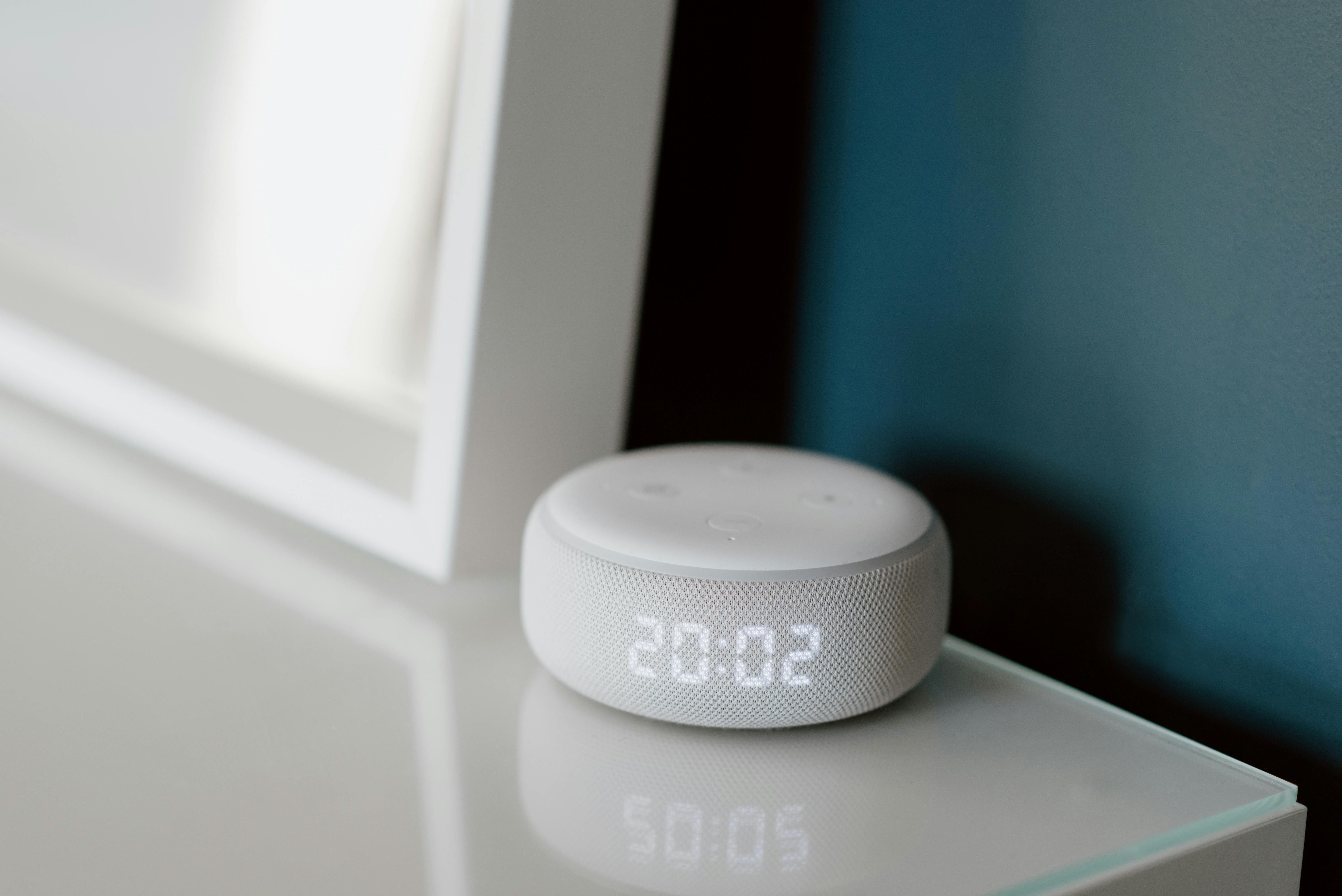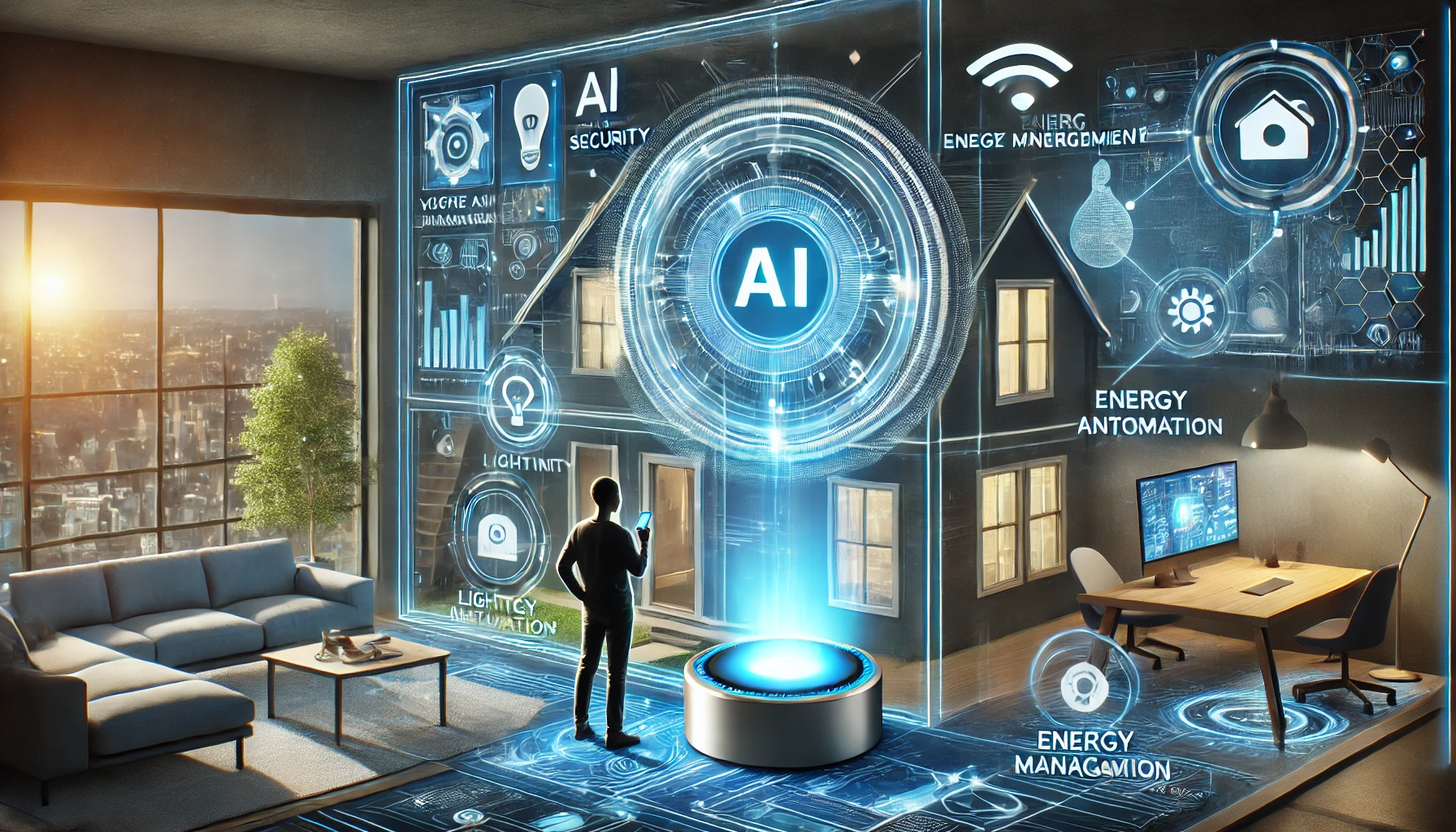Artificial Intelligence (AI) is transforming smart homes by automating daily tasks, improving security, and optimizing energy consumption. AI-powered devices help homeowners create more efficient, comfortable, and connected living spaces. In this article, we will explore how AI is revolutionizing smart home technology.

Image: Modern living room with integrated smart home technology. Photo by Fauxels from Pexels, licensed under Pexels License.
1. The Role of AI in Smart Homes
AI enhances home automation by:
Automating appliances and home systems for convenience, allowing homeowners to control everything from lighting and temperature to entertainment and security through centralized AI systems that learn user preferences over time.
Enhancing security with AI-powered surveillance that can distinguish between normal activities and potential threats, sending alerts only when necessary and reducing false alarms that plague traditional security systems.
Optimizing energy use to reduce costs and environmental impact through intelligent monitoring systems that adjust heating, cooling, and electricity usage based on occupancy patterns, weather forecasts, and peak pricing periods.
Industry Impact: According to the 2024 Smart Home Market Analysis, households with AI-integrated systems report average energy savings of 23% and a 35% reduction in home security incidents compared to homes with traditional systems.
2. Best AI-Powered Smart Home Technologies
A. AI in Virtual Assistants
Amazon Alexa AI: Controls smart home devices with voice commands while continuously learning user preferences and routines. Alexa can now anticipate needs based on time of day, occupancy patterns, and even weather conditions to proactively suggest actions.
Google Assistant AI: Automates home routines and schedules through advanced natural language processing. The latest version can understand context-dependent commands and manage multiple connected devices simultaneously with minimal user input.

Image: Person using voice commands to control smart home functions. Photo by Cottonbro from Pexels, licensed under Pexels License.
B. AI in Home Security
Ring AI Security System: Uses facial recognition and behavioral analysis for home surveillance, distinguishing between residents, frequent visitors, and unknown persons. The system can detect unusual activities and provide contextual alerts based on learned household patterns.
Nest Cam IQ: AI-powered motion detection for smart security that can differentiate between humans, pets, and other moving objects. Advanced algorithms identify specific activities like package deliveries or suspicious loitering, providing relevant notifications to homeowners.
C. AI for Smart Energy Management
Nest Thermostat AI: Adjusts temperature based on user habits and occupancy patterns, learning from manual adjustments to create personalized comfort schedules. New versions incorporate weather forecasts and smart grid data to optimize for both comfort and energy efficiency.
Sense AI Energy Monitor: Tracks energy consumption in real time using machine learning to identify individual appliances by their electrical signatures. This granular data helps homeowners identify energy-wasting devices and optimize usage patterns for maximum savings.
“The true power of AI in smart homes isn’t about controlling devices—it’s about creating systems that understand your lifestyle so well that they anticipate your needs before you even think to ask.” — Tony Fadell, Founder of Nest and Former Apple Executive
3. AI and Personalized Smart Living
AI-powered smart lighting systems adjust based on time of day, occupancy, and activities taking place in the home. Advanced systems like Philips Hue AI and LIFX can now recognize specific users and adjust lighting to their personal preferences, even considering factors like ambient light and seasonally adjusted circadian rhythms.

Image: Smart lighting system adjusting automatically based on time of day and user preferences. Photo by Karolina Grabowska from Pexels, licensed under Pexels License.
AI-driven home entertainment recommendations improve user experience by analyzing viewing habits and preferences across multiple platforms. Systems like NVIDIA Shield AI and Apple TV with HomeKit integration can suggest content tailored to specific viewers or group watching situations, while also adjusting room ambiance for optimal viewing experiences.
AI-integrated robotic home assistants help with daily chores, ranging from vacuum cleaning to meal preparation. Advanced models like the Samsung Bot Handy and iRobot Roomba j7+ use computer vision and machine learning to navigate spaces, recognize objects, and adapt to changing home environments.
Case Study: The Stanford Smart Home Living Lab found that families with fully integrated AI home systems saved an average of 7.2 hours per week on household management tasks and reported a 42% increase in overall satisfaction with home life balance.
4. The Future of AI in Smart Homes
The smart home industry is poised for even more transformative AI innovations:
AI-powered home robots for advanced home management that go beyond current capabilities to include complex tasks like cooking, cleaning, home organization, and even basic home maintenance. Companies like Boston Dynamics and Toyota are developing multi-purpose home robots that can learn new tasks through demonstration and natural language instructions.
AI-driven predictive maintenance to prevent system failures by monitoring the health of home appliances and systems. These technologies use acoustic, thermal, and vibrational sensors combined with machine learning to detect early warning signs of potential failures before they occur, scheduling maintenance and ordering replacement parts automatically.

Image: Next-generation smart home hub with integrated AI capabilities. Photo by Mikhail Nilov from Pexels, licensed under Pexels License.
AI-enhanced biometric security systems for seamless access control using combined facial recognition, gait analysis, voice recognition, and behavioral patterns to authenticate household members and authorized visitors without requiring keys, cards, or passwords. These multi-factor biometric systems provide significantly higher security while eliminating friction in daily access.
“We’re moving from homes with smart devices to truly intelligent living environments that understand, adapt to, and care for their occupants. The next generation of AI-powered homes will be more like attentive partners than collections of gadgets.” — Dr. Fei-Fei Li, Co-Director of Stanford Human-Centered AI Institute
The Connected Ecosystem: Beyond Individual Smart Devices
The true potential of AI in smart homes lies in creating a seamlessly integrated ecosystem rather than a collection of individual smart devices:
Unified standards and protocols: The industry is moving toward more interoperable platforms like Matter (backed by Apple, Google, Amazon, and others) that allow devices from different manufacturers to work together harmoniously.
Multi-device intelligence: AI systems that coordinate across multiple devices can create experiences impossible with standalone gadgets, such as audio that follows you from room to room or lighting scenes that adapt across the entire home based on activity.
Privacy-preserving AI: Next-generation smart home systems are being designed with privacy as a core feature, processing sensitive data locally rather than in the cloud and giving users granular control over what information is collected and shared.
Conclusion: The Intelligent Home of Tomorrow, Today
AI is making smart homes more efficient, secure, and convenient. By integrating AI-powered technologies, homeowners can enjoy a more automated and personalized living experience that adapts to their needs and preferences.
The most significant shift in smart home technology isn’t just the increasing number of connected devices but the growing intelligence that coordinates them. Today’s AI-powered homes can understand context, learn from patterns, predict needs, and create seamless experiences that were impossible just a few years ago.
While challenges remain in areas of standardization, privacy, and security, the trajectory is clear: our homes are becoming responsive environments that actively support our lifestyles rather than just collections of gadgets we control.
Start upgrading your home with AI today and experience the future of connected living!
What smart home technology has made the biggest difference in your daily life? Share your experience in the comments below.

